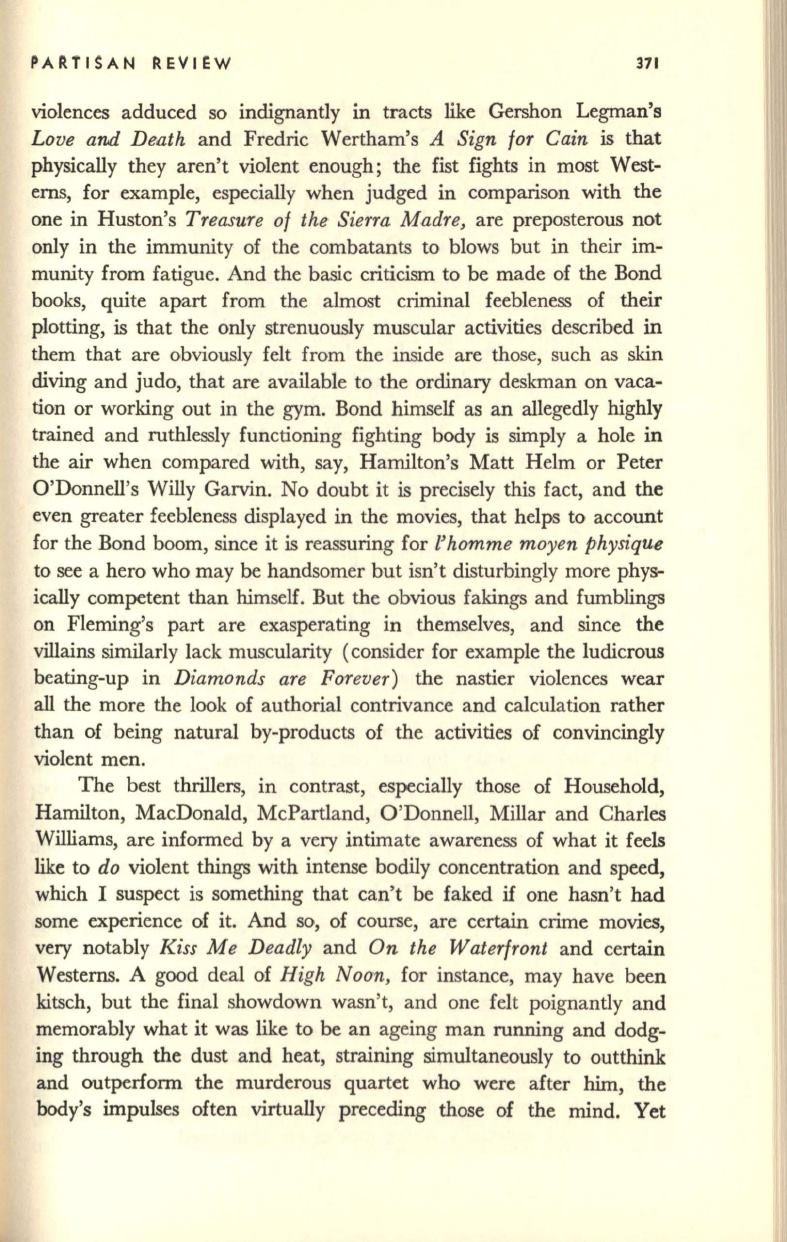
PARTISAN REVIEW
371
violences adduced so indignantly in tracts like Gershon Legman's
Love and Death
and Fredric Wertham's
A Sign for Cain
is that
physically they aren't violent enough; the fist fights in most West–
ems, for example, especially when judged in comparison with the
one in Huston's
Treasure of the Sierra Madre,
are preposterous not
only in the immunity of the combatants to blows but in their im–
munity from fatigue. And the basic criticism to be made of the Bond
books, quite apart from the almost criminal feebleness of their
plotting, is that the only strenuously muscular activities described in
them that are obviously felt from the inside are those, such as skin
diving and judo, that are available to the ordinary deskman on vaca–
tion or working out in the gym. Bond himself as an allegedly highly
trained and ruthlessly functioning fighting body is simply a hole in
the air when compared with, say, Hamilton's Matt Helm or Peter
O'Donnell's Willy Garvin. No doubt it
is
precisely this fact, and the
even greater feebleness displayed in the movies, that helps to account
for the Bond boom, since it is reassuring for
l'homme moyen p'hysique
to see a hero who may be handsomer but isn't disturbingly more phys–
ically competent than himself. But the obvious fakings and fumblings
on Fleming's part are exasperating in themselves, and since the
villains similarly lack muscularity (consider for example the ludicrous
beating-up in
Diamonds are Forever)
the nastier violences wear
all the more the look of authorial contrivance and calculation rather
than of being natural by-products of the activities of convincingly
violent men.
The best thrillers, in contrast, especially those of Household,
Hamilton, MacDonald, McPartland, O 'Donnell, Millar and Charles
Williams, are informed by a very intimate awareness of what it feels
like to
do
violent things with intense bodily concentration and speed,
which I suspect is something that can't be faked
if
one hasn't had
some experience of it. And so, of course, are certain crime movies,
very notably
Kiss Me Deadly
and
On the Waterfront
and certain
Westerns. A good deal of
High Noon,
for instance, may have been
kitsch, but the final showdown wasn't, and one felt poignantly and
memorably what it was like to be an ageing man running and dodg–
ing through the dust and heat, straining simultaneously to outthink
and outperform the murderous quartet who were after him, the
body's impulses often virtually preceding those of the mind. Yet


